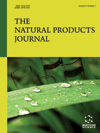
Full text loading...
The use of aromatic and medicinal plants and their bioactive compounds in the development of new antimicrobial agents for the treatment of infectious diseases has become a very urgent issue due to the emergence of microbial strains resistant to anti-infectious treatments. Opuntia ficus-indica (L.) Miller, also known as prickly pear, is a wild plant native to arid and semi-arid regions. It can be considered a source of food or used for various production purposes, and it is widely known for its beneficial properties. The different parts of this plant, such as cladodes, fruits, peels, and seeds, could have remarkable therapeutic potentials due to their content of phenolic compounds, polyunsaturated fatty acids, pigments, sterols, and other active compounds, and are safe for human use. This includes antioxidant, anti-inflammatory, gastroprotective, antiulcer, antiviral, and anticancer effects, among others. The antimicrobial action of extracts and phytochemical compounds from different parts of cactus has been shown in different scientific experiments against bacteria, fungi, and viruses, and their therapeutic potentials have been reported, thus contributing to a decrease in drug resistance. This article presents a comprehensive review of the scientific literature on the antimicrobial activity of Opuntia ficus-indica and the role of its phytocompounds in the fight against antimicrobial resistance.

Article metrics loading...

Full text loading...
References


Data & Media loading...

